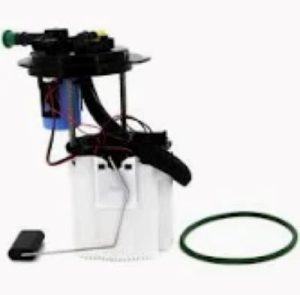The diagnosis of fuel pump problems involves several very crucial steps in ensuring that the pump is indeed delivering its fuel consistently at the right pressures. Among the most basic tests, perhaps, would be a fuel pressure test. This is done by hooking up a pressure gauge to the fuel rail, whereby the required fuel pressure for most vehicles falls in the range of 30 psi to 80 psi, depending on the nature of the engine. If below the range specified by the manufacturer, it may normally mean that the fuel pump has weakened and fails to create the pressure required. With low pressure, one could experience a decrease in fuel flow, characterized by stalling, rough idling, and difficult cold starts.
The other diagnosis entails testing the flow rate since this typically engages the amount of fuel that the pump can deliver within a certain period. Typically, it is measured in liters per hour and should be compatible with the engine's requirements. Normally, conventional pumps provide flow rates of around 90 to 130 LPH, but high-performance pumps can surge up as high as 255 LPH. Starvation of this magnitude is the cause of fuel starvation, resulting in hesitation when trying to accelerate. Mechanics take fuel for a minute and measure its volume to confirm if the pump meets or exceeds its flow rate specs.

Voltage test gives insight into the electrical health of the fuel pump. Attaching a multimeter with the wiring of the pump allows checking a constant 12-volt power supply needed for the operation of the pump. Worn wiring or a dying relay will not keep voltage high enough to allow the pump to run effectively. These symptoms are found most commonly in high-mileage vehicles, as time may wear down the wiring inside the vehicle. If the voltage test is performed and does not return normal readings, then the problem could be in the wiring or relay rather than in the pump itself.
Noise diagnosis is an easier but efficient way of detecting problems in pumps. A good fuel pump operates without noise, while a dying pump generates a whining or humming noise, showing its inner wear. Mechanics listen to the sound that the pump makes during operation. Any odd sounds from the pump call for further testing. The ability to ascertain the sound diagnosis and adding pressure and flow tests yields complete insight into the fuel pump's status.
Even automotive expert Lee Iacocca once said, "You can have brilliant ideas, but if you can't get them across, your ideas won't get you anywhere." A properly diagnosed Fuel Pump means seamless performance and longevity. If you need a proper diagnosis for your fuel pump problems or quality replacement options, consider Fuel Pump and visit their website for more.
